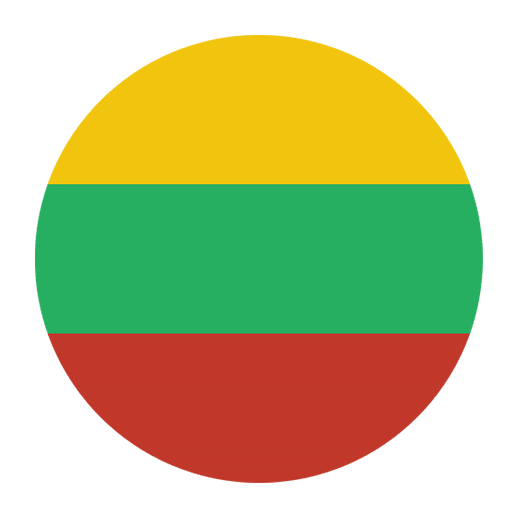Learning a new language can be a daunting task, especially when it comes to languages that are less commonly spoken, such as Lithuanian. With its complex grammar rules and unique phonetics, Lithuanian can seem like an insurmountable challenge for many. However, the advent of virtual reality (VR) technology has opened up new avenues for immersive and interactive language learning experiences. This article will explore how VR can be used to facilitate the learning of Lithuanian, making the process engaging, effective, and enjoyable.
The Unique Challenges of Learning Lithuanian
Lithuanian is one of the oldest languages in the world, retaining many features of Proto-Indo-European that have disappeared in other languages. This makes it fascinating but also difficult for learners. The language has a rich system of noun declensions, a variety of verb forms, and a unique set of sounds that can be challenging for English speakers to master. Traditional language learning methods, such as textbooks and classroom instruction, can sometimes fall short in providing the immersive experience necessary to fully grasp these complexities.
The Role of Immersion in Language Learning
Immersion is a key component of effective language learning. It allows learners to experience the language in context, helping them understand not just the words and grammar, but also the cultural nuances and idiomatic expressions that are integral to fluency. Traditional immersion programs often involve traveling to a country where the language is spoken, but this is not always feasible for everyone. This is where virtual reality comes in.
How Virtual Reality Enhances Language Learning
Virtual reality technology has the potential to revolutionize language learning by providing a fully immersive environment where learners can interact with the language in real-time. Here are some of the ways VR can enhance the process of learning Lithuanian:
1. Immersive Environments
VR can transport learners to virtual representations of Lithuanian cities, towns, and countryside, providing a realistic context for language practice. Imagine walking through the streets of Vilnius, interacting with virtual shopkeepers, or participating in a traditional Lithuanian festival—all from the comfort of your home. These immersive environments can make vocabulary and grammar come to life, helping learners understand how the language is used in different situations.
2. Interactive Practice
One of the biggest advantages of VR is the ability to practice speaking and listening in a dynamic and interactive way. VR platforms can simulate real-life conversations with native Lithuanian speakers, allowing learners to practice their pronunciation, improve their listening skills, and gain confidence in using the language. This interactive practice is invaluable, as it provides immediate feedback and helps learners correct mistakes in real-time.
3. Cultural Context
Language and culture are deeply intertwined, and understanding cultural context is essential for true fluency. VR can provide cultural immersion by recreating traditional Lithuanian settings and customs. For example, learners can experience a virtual Kūčios (Christmas Eve) dinner, complete with traditional foods, customs, and conversations. This cultural context not only makes learning more interesting but also helps learners understand the cultural significance of certain words and phrases.
4. Gamification
Many VR language learning platforms incorporate gamification elements to make the learning process more engaging. Learners can complete missions, earn rewards, and compete with others in a virtual environment. This gamified approach can make learning Lithuanian feel like a fun and exciting adventure, rather than a tedious task.
Practical Applications of VR for Learning Lithuanian
Now that we’ve explored the benefits of VR for language learning, let’s look at some practical applications and tools that can help you get started with learning Lithuanian through virtual reality.
1. VR Language Learning Apps
There are several VR apps designed specifically for language learning. Some of these apps offer Lithuanian as one of the languages, providing interactive lessons, vocabulary practice, and cultural immersion experiences. Examples of such apps include:
– **Mondly VR**: Mondly offers a VR language learning app that includes Lithuanian. The app provides interactive conversations with virtual characters, vocabulary practice, and immersive environments.
– **ImmerseMe**: ImmerseMe offers VR experiences for various languages, including Lithuanian. The app focuses on real-life scenarios, such as ordering food at a restaurant or checking into a hotel, providing practical language practice.
2. Virtual Language Exchange
Virtual language exchange platforms connect learners with native speakers for language practice. Some of these platforms offer VR capabilities, allowing learners to have immersive conversations with native Lithuanian speakers in a virtual environment. This can be a great way to practice speaking and listening skills while also learning about Lithuanian culture.
3. Online VR Communities
Joining online VR communities can provide additional opportunities for language practice and cultural immersion. Platforms like VRChat and AltspaceVR host virtual events and meetups where users can interact in different languages. Look for Lithuanian language groups or cultural events to practice your skills and connect with other learners.
4. VR Language Courses
Some language schools and educational institutions offer VR language courses as part of their curriculum. These courses provide structured lessons and practice opportunities in a virtual environment. Check with language schools or online education platforms to see if they offer VR courses for learning Lithuanian.
Tips for Effective Learning with VR
While VR offers many advantages for language learning, it’s important to approach it with the right mindset and strategies. Here are some tips to make the most of your VR language learning experience:
1. Set Clear Goals
Before you start using VR for language learning, set clear goals for what you want to achieve. Whether it’s improving your pronunciation, expanding your vocabulary, or understanding cultural nuances, having specific goals will help you stay focused and motivated.
2. Practice Regularly
Consistency is key to language learning. Make VR practice a regular part of your routine, even if it’s just for a few minutes each day. Regular practice will help reinforce what you’ve learned and build your confidence.
3. Take Notes
While VR provides an immersive experience, it’s still important to take notes on new vocabulary, grammar rules, and cultural insights. Keep a language journal to track your progress and review what you’ve learned.
4. Engage with Native Speakers
Whenever possible, engage with native Lithuanian speakers in VR or other online platforms. Real-life conversations are invaluable for improving your speaking and listening skills, and native speakers can provide valuable feedback and insights.
5. Combine VR with Other Learning Methods
While VR is a powerful tool, it’s most effective when combined with other learning methods. Use textbooks, online courses, language apps, and other resources to complement your VR practice and provide a well-rounded learning experience.
Overcoming Challenges and Limitations
While VR offers many benefits for language learning, it’s important to be aware of its limitations and challenges. Here are some potential issues and how to overcome them:
1. Accessibility
Not everyone has access to VR equipment, which can be a barrier to using this technology for language learning. If you don’t have a VR headset, look for affordable options or consider using smartphone-based VR solutions, which can be more accessible.
2. Technology Issues
VR technology is still evolving, and you may encounter technical issues such as glitches or connectivity problems. Be patient and troubleshoot any issues that arise. Keep your VR software and hardware updated to minimize problems.
3. Limited Content
While VR language learning content is growing, it may still be limited for less commonly spoken languages like Lithuanian. Explore different VR platforms and apps to find the best resources available, and supplement your VR practice with other learning methods.
4. Motion Sickness
Some people may experience motion sickness when using VR. If you’re prone to motion sickness, take breaks, use VR in short sessions, and choose VR experiences that are less likely to cause discomfort.
The Future of VR in Language Learning
The potential of VR for language learning is immense, and as technology continues to advance, we can expect even more innovative and effective solutions. Future developments may include:
1. Enhanced AI and Language Recognition
Advancements in artificial intelligence and language recognition technology will enable more accurate and personalized language learning experiences. AI-driven virtual tutors could provide real-time feedback and adapt lessons to individual learning styles and needs.
2. More Diverse Content
As the demand for VR language learning grows, we can expect more diverse and high-quality content for various languages, including Lithuanian. This will provide learners with even more opportunities for immersive and interactive practice.
3. Integration with Other Technologies
The integration of VR with other emerging technologies, such as augmented reality (AR) and artificial intelligence (AI), will create even more powerful and immersive language learning experiences. For example, AR could be used to overlay translations and language tips onto real-world objects, while AI could provide personalized feedback and adaptive learning paths.
4. Greater Accessibility
As VR technology becomes more affordable and accessible, more people will be able to take advantage of its benefits for language learning. This will democratize access to high-quality language education and provide more opportunities for learners around the world.
Conclusion
Learning Lithuanian, or any language, is a journey that requires dedication, practice, and the right tools. Virtual reality offers a unique and powerful way to enhance this journey, providing immersive and interactive experiences that make language learning more engaging and effective. By leveraging VR technology, learners can overcome the challenges of traditional language learning methods and gain a deeper understanding of the Lithuanian language and culture.
Whether you’re a beginner just starting out or an advanced learner looking to refine your skills, incorporating VR into your language learning routine can provide valuable practice and insights. As technology continues to evolve, the possibilities for VR language learning are endless, and the future looks bright for those eager to explore new ways of mastering Lithuanian.
So, put on your VR headset, step into a virtual Lithuanian world, and embark on an exciting and immersive language learning adventure!

